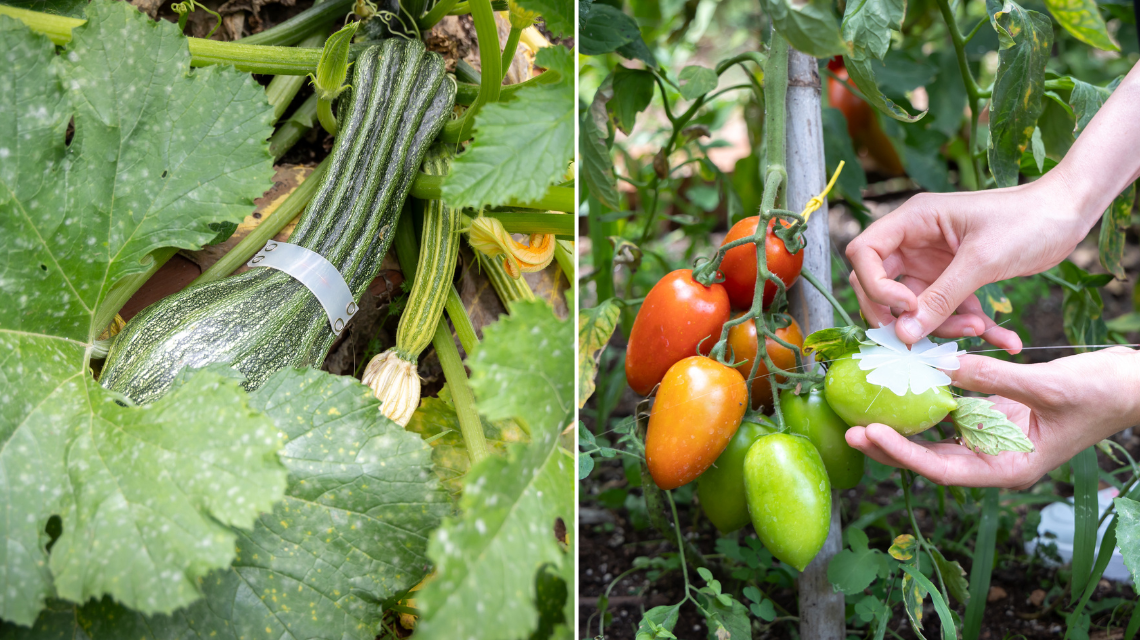Italian National Agency for New Technologies, Energy and Sustainable Economic Development

Agriculture: From ENEA Hi-tech sensors to monitor plant growth
Campus Bio-Medico University of Rome and ENEA, jointly with the University of Naples Federico II, have developed and tested customized fiber optic sensors to be applied to plants and fruits to monitor their growth and health in a non-invasive way. The outcomes, published on various scientific journals[1], highlights solutions for sustainable and smart agriculture that uses technology to increase crops yield and quality, in a global scenario increasingly characterized by climate change and population growth.
“This research project stems from a collaboration among three research units of the Campus Bio-Medico University of Rome – 'Biomedical measurements and instrumentation', 'Food sciences and nutrition' and 'Nonlinear physics and mathematical models' - and the ENEA Research Center of Frascati”, pointed out Emiliano Schena, full professor of Mechanical and Thermal Measurements at UBCM. “The objective – he said – is to develop 'wearable' technologies to monitor the microenvironmental and physiological parameters of the plant, which find application in the field of precision agriculture. Through these technologies we want to gather information to improve plant management, from the optimization of agricultural production to plant monitoring.
The sensors created by the research team have different characteristics based on the parts of the plants where data is collected (stem, leaves or fruit). The scientists worked on very popular crops, like tomatoes, melons and courgettes, and other plants particularly used by industry like tobacco.
“We created two different fiber optic sensors: one with an elongated shape was positioned on the stems of a tobacco plant and a tomato plant grown in the laboratory, while the second ring-shaped device was applied around a melon and a courgette grown outdoors", explained Michele Caponero, researcher at the ENEA Laboratory of Micro and Nanostructures for Photonics and co-author of the study.
“In both cases – he said – the sensors have demonstrated high sensitivity in detecting plant growth, like stem elongation in the case of tobacco and tomato and the variation in circumference in the case of fruit, both in protected conditions and in the field, where we recorded significant variations in environmental conditions in terms of temperature, humidity and lighting, monitored witho appropriately functionalized fiber optic sensors".
Fiber optic sensors are shown to be increasingly efficient and reliable non-invasive monitoring tools in agriculture: they can be customized, to make them easily attached to different parts of the plant. They are biocompatible and have a very flexible structure, as they are made of silicone-coated optical fibers. Their performance is guaranteed by high sensitivity to deformation, which in the case of plants corresponds to their development, reliability of the signal, miniaturized dimensions and smaller weight.
“Our sensors have demonstrated their ability to monitor all these fundamental aspects for plant development, in 'symbiosis' with the crop,” said Caponero.
The Biomedical Measurements and Instrumentation Research Unit of the UCBM has dealt in particular with the creation of wearable sensors based on optical fibres. They use polymer matrices that allow the sensor to be anchored to plants. These sensors monitor parameters such as relative humidity or temperature and provide useful information on the health of the plant, such as how much it is growing, and overcome some of the limitations present in current precision agriculture technologies. “The instruments currently in use do not allow continuous monitoring of parameters nor high performance in terms of time, space, sensitivity and accuracy,” concluded Schena.
So far, various remote sensing applications have been used to control plant growth, such as spectroscopy or drones, which however are not very suitable for timely, accurate and continuous monitoring; in fact, to optimize plant growth it is essential to know in a timely manner the influence of environmental factors on crop productivity, like soil humidity and temperature which influence crop water use efficiency. Drought and water stagnation can cause an energy and mineral deficit, inhibiting plant growth and reducing the nutritional value of its edible parts.
Currently, appropriately functionalized fiber optic sensors- developed by the ENEA Laboratory of Micro and Nanostructures for Photonics, in collaboration with the UCBM, as part of the TECHEA - Technologies for Health Project- are mainly used in the medical field through hi-tech clothing that allows continuous and real-time monitoring of some fundamental parameters for human health.
Video - ENEA and Campus Bio-Medico of Rome develop sensors for precision agriculture
